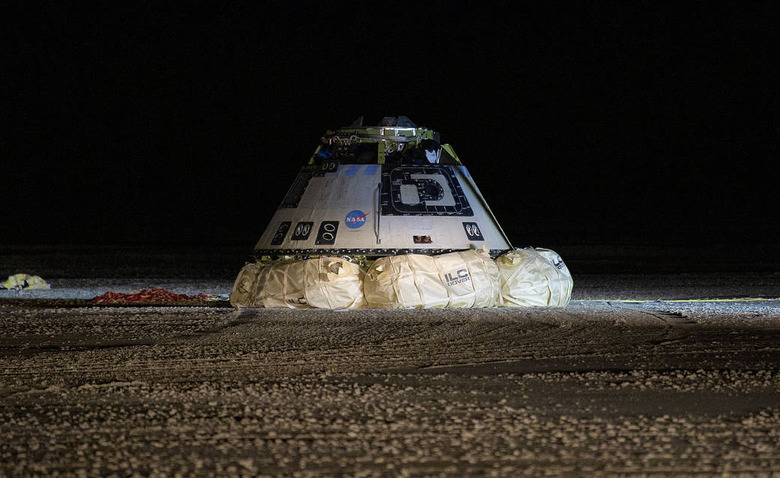Boeing Will Have To Reattempt Failed Starliner Test Flight
- Boeing will attempt another test flight to the International Space Station without crew members aboard its Starliner spacecraft, the company announced this week.
- Late last year, Boeing's Starliner failed to make it to the space station after a glitch caused the vehicle to burn too much fuel too early in the trip.
- SpaceX's Crew Dragon is still on schedule for its first crewed launch in May, making it the first vehicle in the Commercial Crew program to reach that milestone.
- Visit BGR's homepage for more stories.
Late last year, Boeing's Starliner was sent on a crucial test flight to the International Space Station. It didn't hold any crew members, but it would likely have been the last uncrewed flight if things went smoothly. Well, they didn't, and the spacecraft never made it to the space station. Now, Boeing is going to have to try again.
There had been some question as to whether NASA would take the shortcoming in stride and allow for a crewed test flight to commence without Boeing redoing the failed test. Now, after issuing dozens of corrective actions to the company, NASA has clearly made up its mind and Boeing will need to prove its expensive vehicle actually works as intended before NASA allows its astronauts to step onboard.
As Ars Technica reports, Boeing issued a statement explaining that it would indeed be conducting another uncrewed test flight to the ISS.
We are committed to the safety of the men and women who design, build and ultimately will fly on the Starliner just as we have on every crewed mission to space. We have chosen to refly our Orbital Flight Test to demonstrate the quality of the Starliner system. Flying another uncrewed flight will allow us to complete all flight test objectives and evaluate the performance of the second Starliner vehicle at no cost to the taxpayer.
The initial test flight fell short of expectations after a glitch in the spacecraft's computer system mistakenly believed it was farther along in the mission than it truly was. This prompted the vehicle to burn too much of its precious fuel prior to venturing toward the International Space Station. Ultimately it was forced to land back on Earth without ever even attempting to reach the ISS.
A subsequent investigation by NASA resulted in 61 corrective actions that the agency wanted Boeing to address. It's unclear exactly how far into the process the company is at this point, but it has committed to the second uncrewed test flight. There's no telling when that flight will actually happen, and with SpaceX's first crewed launch still on track for May, it's clear that the race between the two companies to send an astronaut into space is SpaceX's to lose.
